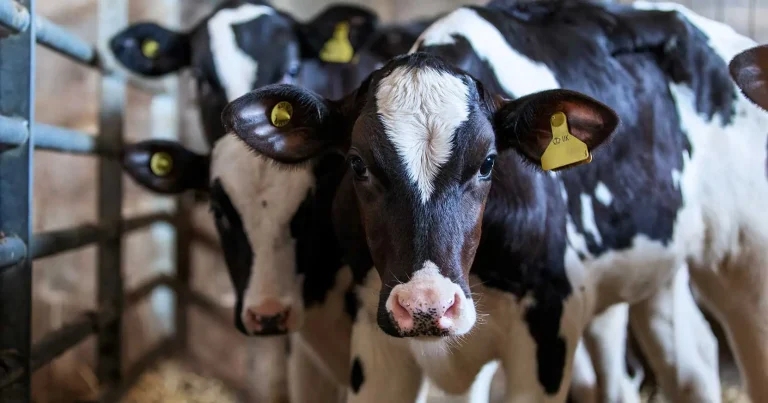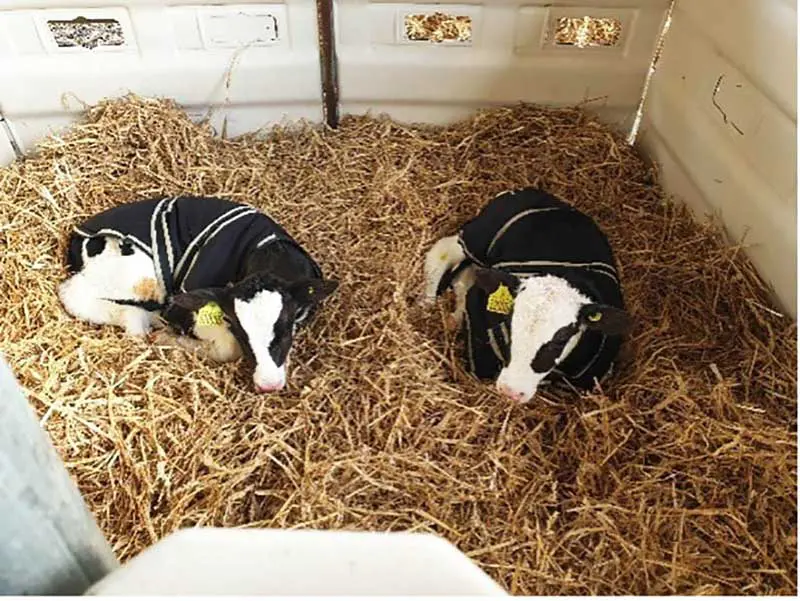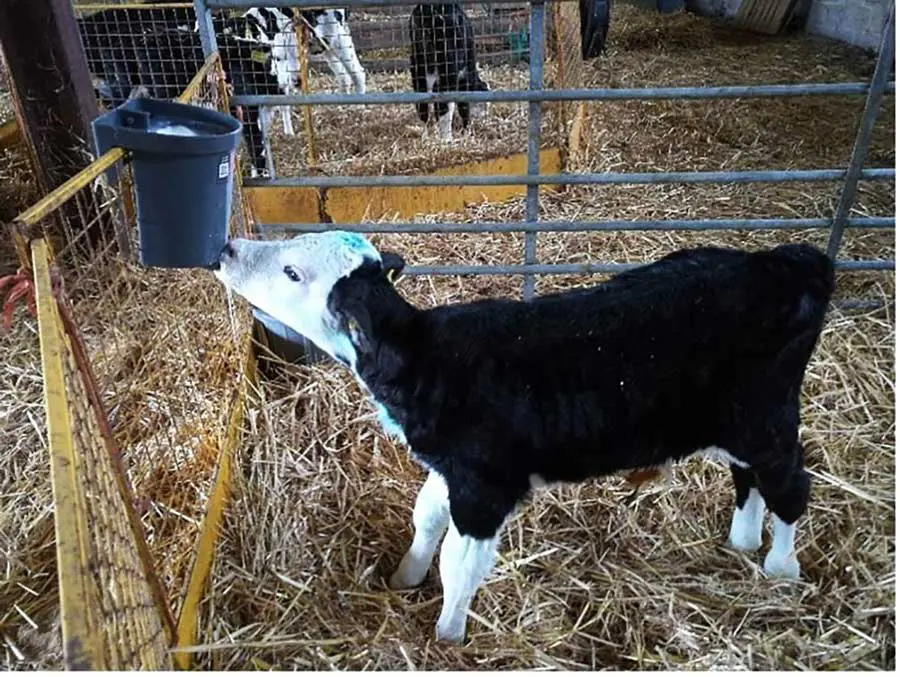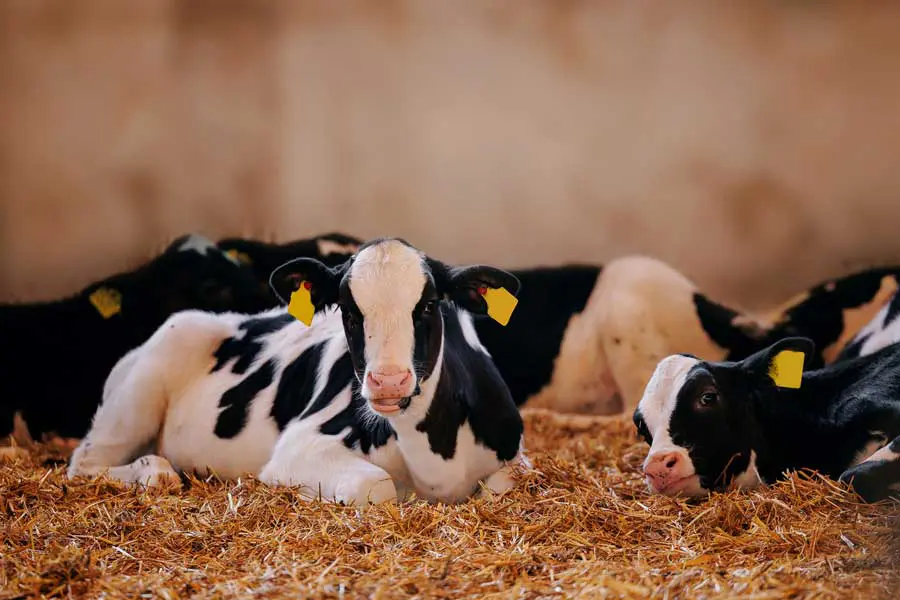23 Sept 2025
Do calves have friends? Look at social side of calf housing
Sophie Mahendran BVM, BVS, DipECBHM, PGCert Vet Ed, MSc, VetEpi & Public Health, PhD, MRCVS discusses the benefits to farmers and herds of paired or grouped enclosures.

Image: Kieran / Adobe Stock
Individual calf housing is still widely used in many countries, but here in the UK, we are moving back towards keeping calves in social groups.
The concept of pair housing is not new in the dairy industry, with supermarket contracts being some of the first to push the uptake of this management system nearly a decade ago. There has also been increasing public scrutiny around the welfare of farmed animals, with calf housing making the headlines in UK newspapers on several occasions, increasing the pressure placed on our farmers to meet the public’s perceived expectations of a “happy” calf. As a vet, we must support our farmers to help them meet these challenges, and the best way to do this is often through a logical approach that utilises an evidence base to inform the advice we give.
Why has individual calf housing been so prevalent in the past?
Over the previous few decades, many calf housing recommendations have focused on individual housing, with around 60% of UK farms using this system prior to 2010 (Marcé et al, 2010). One of the main reasons was that individual housing was thought to improve biocontainment by reducing the transmission risk of enteric pathogens by faecal-oral routes (Barrington et al, 2002) and to lower the risk of aerosol spread of respiratory pathogens (Callan and Garry, 2002).
Essentially, by isolating calves from each other, it was thought to reduce the risk of disease spreading between them. It may also have been the case that historical colostrum management has been somewhat poor, resulting in very vulnerable calves that were best protected in the neonatal period by reducing exposure to pathogens through isolating them. However, given that legislation around calf housing states that calves kept in individual pens should still have direct visual and tactile contact with other calves, and the maximum age they can remain in individual pens is up to eight weeks of age – see Council Directive 91/629/EEC and Council Directive 97/2/EC, and Welfare of Farmed Animals (England) Regulations 2000 (SI 2000 No 1,870) Schedule 4 – this somewhat means that legally compliant individual calf housing does not actually provide biocontainment.
In addition, respiratory viruses have demonstrated transmission across distances of 3.85m between separate pens (Mars et al, 1999), again suggesting this housing method doesn’t provide as much protection as you might think. Individual housing is currently used by around 38.4% of farms in the UK (Mahendran et al, 2022), with farmers now tending to house calves for the first few days to weeks of life in them before moving them into pair or group housing systems.
How do calves learn?
Cattle are social group-living animals, with calves having evolved to learn from the herd – especially around feeding behaviours. They also like to have physical contact with other cattle and are prepared to work hard to gain full social contact with a peer (Holm et al, 2002). The presence of another calf in stressful situations has also been shown to have a calming effect on behavioural responses (Grignard et al, 2000).
Calves are capable of instinctive imitation, which means they can observe and learn from others (Morgan, 1920), as well as using social facilitation and social learning that increases the frequency of behaviours that are already known to them when observing or interacting with others. This is most easily demonstrated through an increase in feed consumption in the presence of a feeding companion (Clayton, 1978; Keeling and Hurnik, 1996). This means that keeping calves in individual pens reduces their ability to learn, and can result in problems such as neophobia, when calves become unwilling or hesitant to try new feed substances.
In addition to social learning, calves are capable of forming social bonds (Figure 1). Lindner et al (2021) tested the social preferences of calves in open arena tests and found that pair-housed calves spent more time in close proximity to their pen mate compared to less familiar calves, and overall were more social.

Calves are also socially motivated and will exert more effort to be with a social partner rather than be alone (Ede et al, 2022).
Does pair housing work for calves?
Pair housing is the smallest type of social housing, offering the benefits of social learning while maintaining some of the perceived farm management benefits.
In a farmer survey, calf rearers reported that using individual housing helped them to monitor calf feeding behaviours and, therefore, the health of the calves, largely as they could leave an individually housed calf unsupervised with its milk feed and be able to monitor its intake (Figure 2), which is not possible in a group situation (Mahendran et al, 2022).
Given that reduced feed intakes are an early sign of ill health, being able to identify poorly feeding calves is important, with individual housing providing a relatively easy, low-skilled way to do this. This suggests that being able to successfully use social calf housing requires changes in stockmanship and training to help staff identify sick calves through behaviour changes, early identification of clinical signs and use of technology to help monitor calves.

Social housing has other calf benefits, with pair housing giving increased solid feed intakes (Babu et al, 2004; Costa et al, 2015; De Paula Vieira et al, 2010; Liu et al, 2019), resulting in similar or even greater weight gains than individually housed calves – especially across the weaning period. This supports that social housing is particularly beneficial for growth rates, potentially as it encourages early solid-feed intake and supports a smooth transition at weaning (Jensen et al, 2015).
Other affected behaviours include pair housed calves being able to learn and adapt to training stimuli more easily than individually housed calves, as well as being able to learn to recognise novel objects, which can make them more flexible to changes in management and housing (Gaillard et al, 2014). These positive effects can carry on following weaning, with calves moved into larger groups still showing preferences for proximity to their former pen mates (Bolt et al, 2017; Lindner et al, 2021; Zhang et al, 2021).
What about managing larger groups of calves?
Group housing requires considerably less time commitment compared to managing individual calf housing – less than one minute per calf per day compared to 10 minutes per calf per day, respectively (Kung et al, 1997) – so it can be a popular choice with farm staff to help drive efficiency.
Group sizes can range from three to 30 calves, depending on the farming system, but it is common for farms to report higher disease incidences in group housing, with group sizes of six to nine calves having less disease than 12 to 18 calves (Losinger and Heinrichs, 1996). Housing calves in larger groups tends to lead to increased cognitive performance and behavioural flexibility (Velasquez-Munoz et al, 2023), likely linked to a high variability in the environment within which the group housed calves are reared when compared to individually housed calves (Costa et al, 2016).
Calves housed in groups of six have been shown to spend more time eating solid feeds and start ruminating two weeks younger compared to individually housed calves (Babu et al, 2004), with group housing generally resulting in an increased space allowance per calf which increases active behaviours such as running and play (Jensen et al, 1998; Sutherland and Dowling, 2014).

Conclusion
So, do calves have friends? Yes, calves like to spend time with other calves, enabling them to learn and play together, which can actually help improve dairy heifer growth, health and survival.
Social housing meets the evolutionary needs of cattle, as well as being preferred by the public, so we should be encouraging our farmers to move towards this type of housing.
Grouping does come with challenges, needing good stockmanship – particularly around detection of sick calves – but this can be supported by good veterinary standard operating procedures for treatments, alongside good hygiene and accelerated milk feeding regimes.
- Article appeared in Vet Times (2025), Volume 55, Issue 38, Pages 13-15.
- The author is due to speak on this topic at London Vet Show on 21 November 2025.
Continuous mapping of efficient calf shed environment parameters – an article by the author and George Lindley, based on a presentation at BCVA Congress 2025.
Author
Sophie Mahendran graduated in 2012 and went on to complete an internship and residency programme in production animal medicine. She became a diplomate of the European College of Bovine Health Management in 2019 and completed her PhD in calf health at the RVC in 2024.
References
- Babu LK, Pandey HN and Sahoo A (2004). Effect of individual versus group rearing on ethological and physiological responses of crossbred calves, Applied Animal Behaviour Science 87(3-4): 177-191.
- Barrington GM, Gay JM and Evermann JF (2002). Biosecurity for neonatal gastrointestinal diseases, Veterinary Clinics of North America: Food Animal Practice 18(1): 7-34.
- Bolt SL, Boyland NK, Mlynski DT, James R and Croft DP (2017). Pair housing of dairy calves and age at pairing: effects on weaning stress, health, production and social networks, Plos One 12(1): e0166926.
- Callan RJ and Garry FB (2002). Biosecurity and bovine respiratory disease, Veterinary Clinics of North America: Food Animal Practice 18(1): 57-77.
- Clayton DA (1978). Socially facilitated behavior, The Quarterly Review of Biology 53(4): 373-392.
- Costa JHC, Meagher RK, von Keyserlingk MAG and Weary DM (2015). Early pair housing increases solid feed intake and weight gains in dairy calves, Journal of Dairy Science 98(9): 6,381-6,386.
- Costa JHCC, von Keyserlingk MAG and Weary DM (2016). Effects of group housing of dairy calves on behavior, cognition, performance, and health, Journal of Dairy Science 99(4): 2,453-2,467.
- De Paula Vieira A, von Keyserlingk MAG and Weary DM (2010). Effects of pair versus single housing on performance and behavior of dairy calves before and after weaning from milk, Journal of Dairy Science 93(7): 3,079-3,085.
- Ede T, Weary DM and von Keyserlingk MAG (2022). Calves are socially motivated, JDS Communications 3(1): 44-48.
- Gaillard C, Meagher RK, von Keyserlingk MAG and Weary DM (2014). Social housing improves dairy calves’ performance in two cognitive tests, Plos One 9(2): e90205.
- Grignard L, Boissy A, Boivin X, Garel JP and Le Neindre P (2000). The social environment influences the behavioural responses of beef cattle to handling, Applied Animal Behaviour Science 68(1): 1-11.
- Holm L, Jensen MB and Jeppesen LL (2002). Calves’ motivation for access to two different types of social contact measured by operant conditioning, Applied Animal Behaviour Science 79(3): 175-194.
- Jensen MB, Duve LR and Weary DM (2015). Pair housing and enhanced milk allowance increase play behavior and improve performance in dairy calves, Journal of Dairy Science 98(4): 2,568-2,575.
- Jensen MB, Vestergaard KS and Krohn CC (1998). Play behaviour in dairy calves kept in pens: the effect of social contact and space allowance, Applied Animal Behaviour Science 56(2-4): 97-108.
- Keeling LJ and Hurnik JF (1996). Social facilitation and synchronization of eating between familiar and unfamiliar newly weaned piglets, Acta Agriculturae Scandinavica A: Animal Sciences 46(1): 54-60.
- Kung Jr L, Demarco S, Siebenson LN, Joyner E, Haenlein GFW and Morris RM (1997). An evaluation of two management systems for rearing calves fed milk replacer, Journal of Dairy Science 80(10): 2,529-2,533.
- Lindner EE, Gingerich KN and Miller-Cushon EK (2021). Effects of early social contact on dairy calf response to initial social grouping and regrouping, Journal of Dairy Science 104(9): 10090-10099.
- Liu S, Ma J, Li J, Alugongo GM, Wu Z, Wang Y, Li S and Cao Z (2019). Effects of pair versus individual housing on performance, health, and behavior of dairy calves, Animals 10(1): 50.
- Losinger WC and Heinrichs AJ (1996). Management variables associated with high mortality rates attributable to respiratory tract problems in female calves prior to weaning, Journal of the American Veterinary Medical Association 209(10): 1,756-1,759.
- Mahendran SA, Wathes DC, Booth RE and Blackie N (2022). A survey of calf management practices and farmer perceptions of calf housing in UK dairy herds, Journal of Dairy Science 105(1): 409-423.
- Marcé CLH, Guatteo R, Bareille N and Fourichon C (2010). Dairy calf housing systems across Europe and risk for calf infectious diseases, Animal 4(9): 1,588-1,596.
- Mars MH, Bruschke CJ and van Oirschot JT (1999). Airborne transmission of BHV1, BRSV, and BVDV among cattle is possible under experimental conditions, Veterinary Microbiology 66(3): 197-207.
- Morgan CL (1920). Animal Behaviour (2nd edn), Edward Arnold, London.
- Sutherland MA and Dowling SK (2014). The relationship between responsiveness of first-lactation heifers to humans and the behavioral response to milking and milk production measures, Journal of Veterinary Behavior 9(1): 30-33.
- Velasquez-Munoz A, Rao S, Roman-Muniz N and Pinedo P (2023). Early life behavior and disease dynamics of pair-housed Holstein heifer calves, Applied Animal Behaviour Science 265: 105982.
- Zhang C, Juniper DT and Meagher RK (2021). Effects of physical enrichment items and social housing on calves’ growth, behaviour and response to novelty, Applied Animal Behaviour Science 237: 105295.
